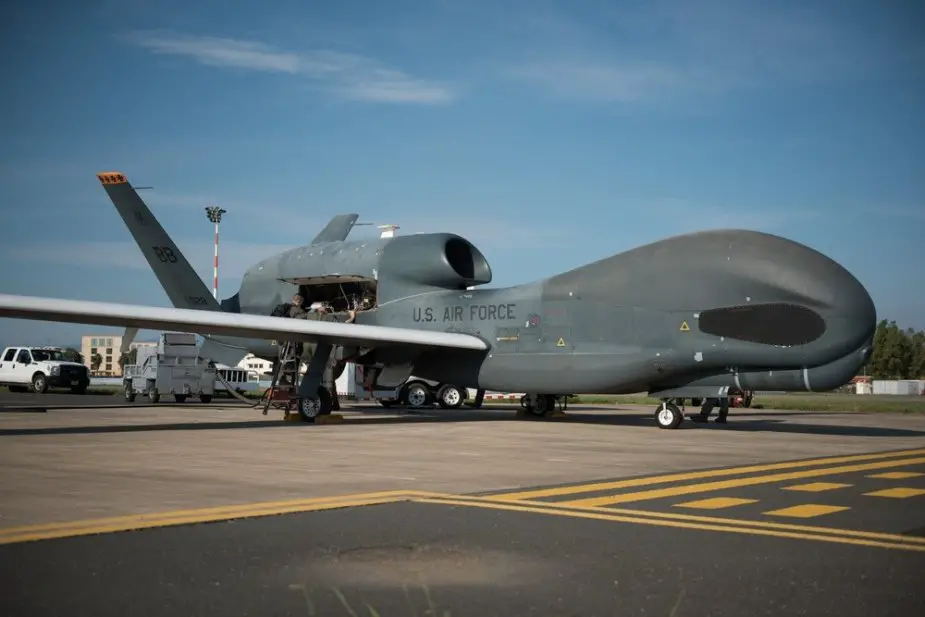Breaking news
Northrop Grumman's innovative approach to hypersonic trial data collection.
Northrop Grumman is gearing up to revolutionize the surveillance of hypersonic system trials by adapting RQ-4 Global Hawk drones into cutting-edge aircraft designed to collect crucial trial data. The aerospace and defense technology company plans to commence integration tests on two newly modified drones, named Range Hawks, later this summer. The company intends to deliver these devices to the Defense Department's Test Resource Management Center (TRMC) by early 2025. Signaling a significant upgrade, these two Range Hawks are the first of 24 retired Air Force Global Hawk drones to be repurposed as airborne test data collectors.
Follow Army Recognition on Google News at this link

On October 24, 2018, at Naval Air Station Sigonella, Italy, the 7th Reconnaissance Squadron prepared an RQ-4 Global Hawk for launch, serving as a maintenance and operations hub to provide airborne Global Hawks to pilots at Beale Air Force Base, California (Picture source: US MoD)
Traditionally, the government has relied on sensors placed on ships to gather data from hypersonic test launches. However, positioning these ships accurately is a time-consuming process that demands considerable resources. In response, the Air Force, NASA, and TRMC have collaboratively developed the SkyRange concept.
This initiative aims to equip Global Hawks with sensors to more efficiently collect data for programs such as NASA's Artemis Moon exploration and various hypersonic vehicles. The first three modified RQ-4s, which are older Block 10 models, have already played a crucial role in supporting these tests from their base at the Armstrong Flight Research Center at Edwards Air Force Base, California.
The success of these initial adaptations has prompted TRMC to expand the SkyRange program. The upcoming batches of Range Hawks will comprise more advanced Block 20 and 30 RQ-4s, which possess capabilities surpassing those of their predecessors.
Technological advancements have now made it possible to miniaturize detection equipment to fit these drones, explains Shaffer, Vice President of Intelligence, Surveillance, Reconnaissance, and Targeting Programs in Northrop Grumman's aeronautics systems sector. The first two RQ-4s are currently undergoing modifications at the Grand Sky facility near Grand Forks, North Dakota. Once equipped, the new sensor suite will enable the Range Hawks to collect detailed telemetry data on hypersonic launches, including speed and trajectory.
Having completed the critical design review phase and finalized the design process, Northrop Grumman has expedited the modification process using digital design techniques. The company plans to modify the remaining RQ-4s in batches, initially focusing on the Block 30 models. As each drone's update takes about eight months, refurbishing the entire fleet will span several years, contingent upon continued program funding. While the cost of each updated Range Hawk remains undisclosed, Shaffer anticipates a reduction in expenses as the program advances.
With these developments, the Air Force, which currently holds nine RQ-4s, plans to eventually retire them. However, recent legislation in the National Defense Authorization Act has deferred any immediate plans to decommission the fleet until after fiscal year 2028, ensuring the continued use of these drones in national defense efforts.
Defense News March 2024


























